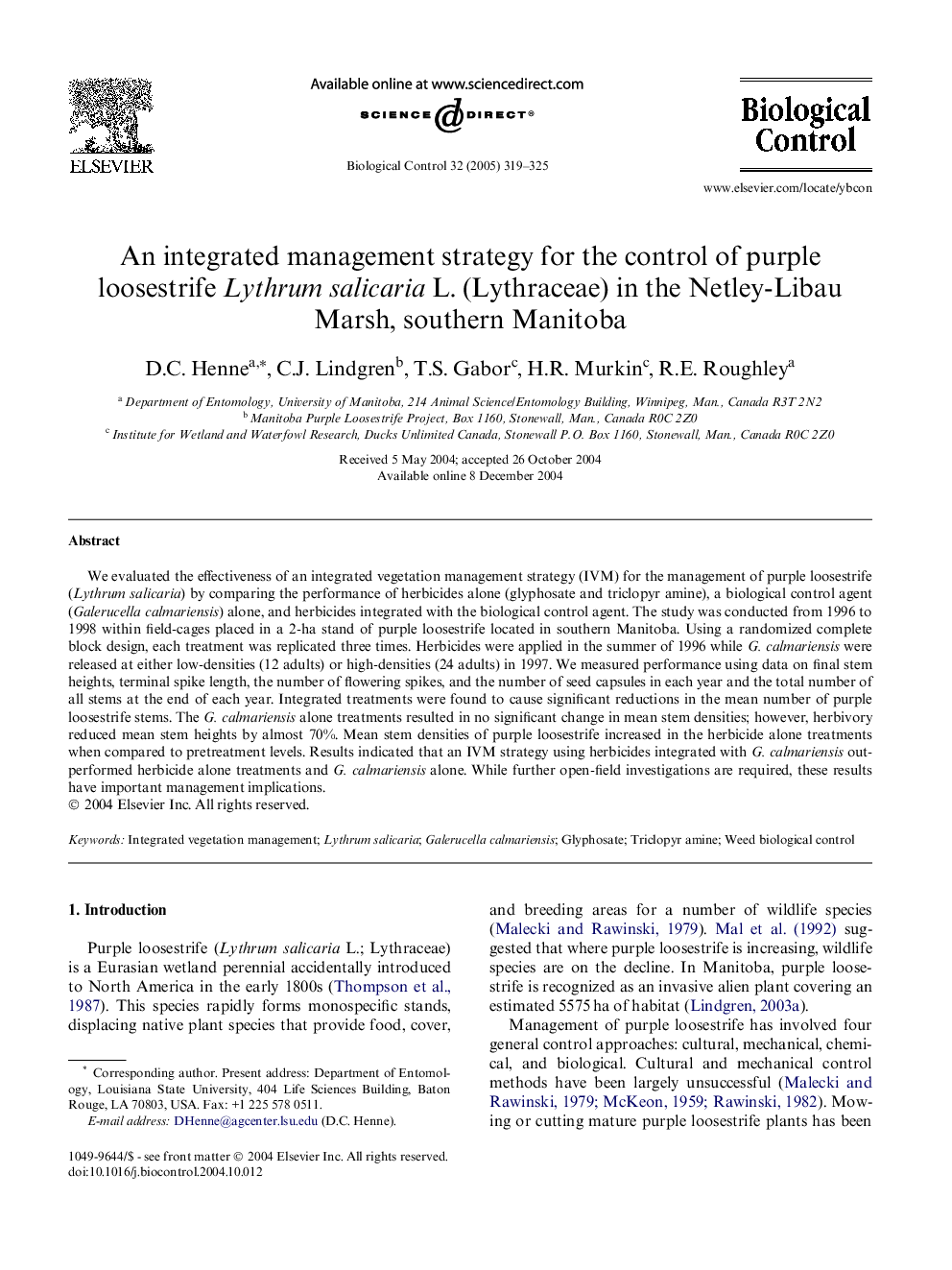| Article ID | Journal | Published Year | Pages | File Type |
|---|---|---|---|---|
| 9472047 | Biological Control | 2005 | 7 Pages |
Abstract
We evaluated the effectiveness of an integrated vegetation management strategy (IVM) for the management of purple loosestrife (Lythrum salicaria) by comparing the performance of herbicides alone (glyphosate and triclopyr amine), a biological control agent (Galerucella calmariensis) alone, and herbicides integrated with the biological control agent. The study was conducted from 1996 to 1998 within field-cages placed in a 2-ha stand of purple loosestrife located in southern Manitoba. Using a randomized complete block design, each treatment was replicated three times. Herbicides were applied in the summer of 1996 while G. calmariensis were released at either low-densities (12 adults) or high-densities (24 adults) in 1997. We measured performance using data on final stem heights, terminal spike length, the number of flowering spikes, and the number of seed capsules in each year and the total number of all stems at the end of each year. Integrated treatments were found to cause significant reductions in the mean number of purple loosestrife stems. The G. calmariensis alone treatments resulted in no significant change in mean stem densities; however, herbivory reduced mean stem heights by almost 70%. Mean stem densities of purple loosestrife increased in the herbicide alone treatments when compared to pretreatment levels. Results indicated that an IVM strategy using herbicides integrated with G. calmariensis outperformed herbicide alone treatments and G. calmariensis alone. While further open-field investigations are required, these results have important management implications.
Related Topics
Life Sciences
Agricultural and Biological Sciences
Agronomy and Crop Science
Authors
D.C. Henne, C.J. Lindgren, T.S. Gabor, H.R. Murkin, R.E. Roughley,
